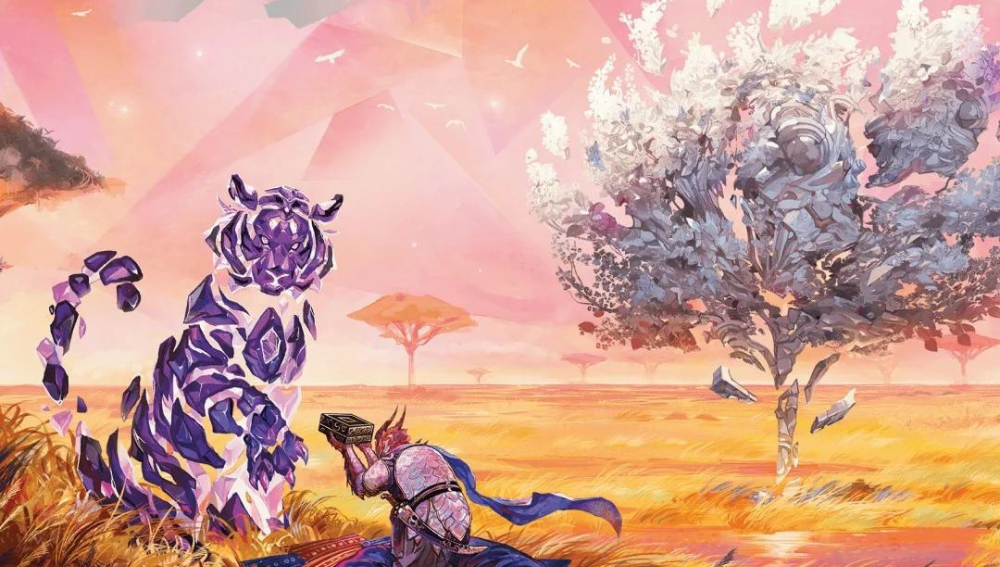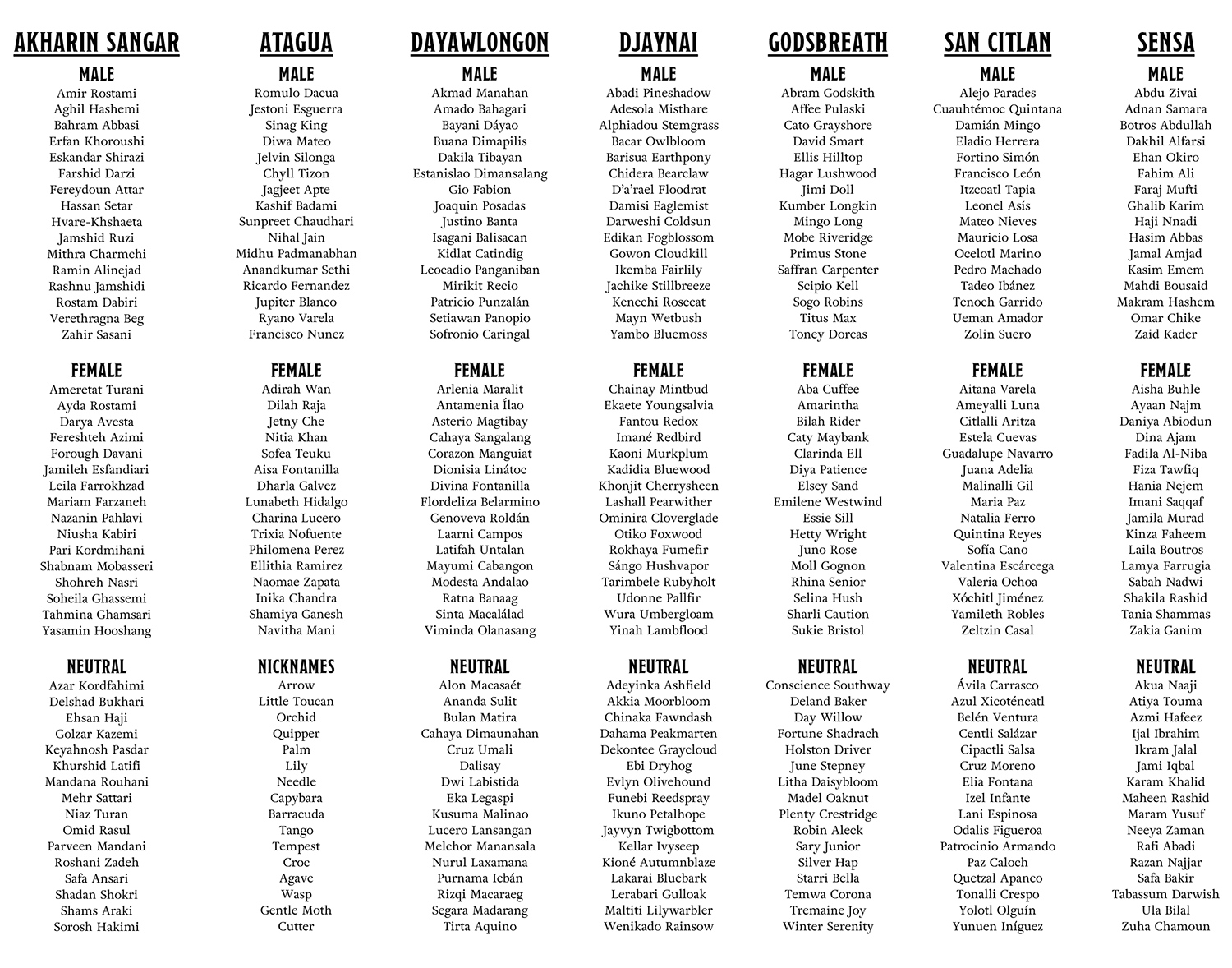Journeys Through the Radiant Citadel is a transplanar adventure anthology featuring fifteen new and vibrant worlds for your D&D characters to explore. To truly bring these worlds to life, of course, each must remain distinct from the others. One key way you can do this is through the names of the characters, so it’s just not good enough to use generic fantasy names (like the list found here).
The book features a list of names for each setting, but they’re very short lists (sometimes offering only a dozen or so options). Estela Apanco, Eladio Infante, and Xochitl Moreno are fantastic options… but then what?
Obviously you need more. And that’s where this name list comes into play, expanding your options for each setting to roughly four dozen names (which can usually be mix-and-matched for many more).
GENERAL NOTES
Basic Use: Pick a name.
For Variety: Mix-and-match first and last names. (For example, take “Shing Bao” and “Tong Jun”. You can name a character “Shing Jun” instead.)
Disclaimer: Anywhere that I’ve butchered proper naming conventions, you can assume that it was a totally deliberate decision reflecting the fantastical nature of the setting. (Innocent whistling.)
SAN CITLÁN
Two Surnames: Those native to San Citlán may have two family surnames, one inherited from each of their parents. Select an additional surname to achieve this effect.
SHANKHABHUMI
Shankhabhumi surnames are all based on their city of birth (either Sagopuri, Ashwadhatuj, or Tippuri). Descendants of Manivarsha can take the last name Bhatiyali.
TAYYIB
The nisbah last names should be based on locations from the Tayyib Empire (and surrounding lands). I’ve seeded in a few of these, but we don’t know enough about the Empire to do it properly. So some of these surnames will make the knowledgeable either (a) believe the NPC must have traveled to the Empire from Earth or (b) roll their eyes at you.
UMIZU
Names are given last-first.
YEONIDO
Clan names are listed first.
Given names often have two syllables, and it’s not unusual for siblings and cousins of the same generation to share one syllable of their name (e.g., Ji-Min and Ji-Yun).
YONGJING
Family name is listed first.
Status name is listed second. All of the listed names use birth order status names (so you don’t accidentally make someone a noble). Swap them out as needed.
- Firstborn: Bo, Meng. Second-born: Xia, Zhong. Third-born: Shu. Fourth-born+: Ji.
- Noble: Jun. Heir: Si. Scholar: Wen.
Aspirational name listed third.
A person’s personal name is status name + aspirational name.
All Yongjing names are ungendered.














This is extremely useful! Lists of names for conventions I’m unfamiliar with are always useful.
You could probably get more Tayyib (Tayyibian? Al-Tayyib?) place names from Journeys Beyond the Radiant Citadel, though I haven’t quite convinced myself to drop ten bucks on thirty pages to find out for sure. Assuming, of course, that you don’t see the “NPCs from Earth” scenario as a desirable nod to the absolutely bizarre canon surrounding Mulhorand.
(Yeesh, did the reverse-Stargate scenario really originate in the 3rd Edition book where I first read it? I always just assumed it came from the hazy mists of Deities and Demigods,when they casually mentioned that some Earth pantheons would show up in probably-Greyhawk because those gods could travel between our universe and fictional ones. Strange.)
Regardless of the strange place this tangent wound up, this is good stuff, and it leaves me hoping all the more that you also do a full review of Radiant Citadel!
Why are all these names bipartite? Is that reflected in the Radiant Citadel source text. It is not the case that all real-world human cultures use two-element names, why should it be true in fantasy-multiplanar-world?
@Jason: The names here follow the conventions laid down by the book. The book is dominated by first-last or last-first naming conventions (Yongjing is an exception).
This actually did make this particular project more difficult than I’d originally thought it would be: I’d anticipated being able to fall back on a lot of work I’ve done with real world naming conventions (like this name list for Infinity), but because most of the naming conventions didn’t map directly to the cultural inspiration, I had to rework the lists from scratch.
Check out this website for developments on the Tayyib Empire. https://sites.google.com/view/tales-of-the-tayyib-empire/